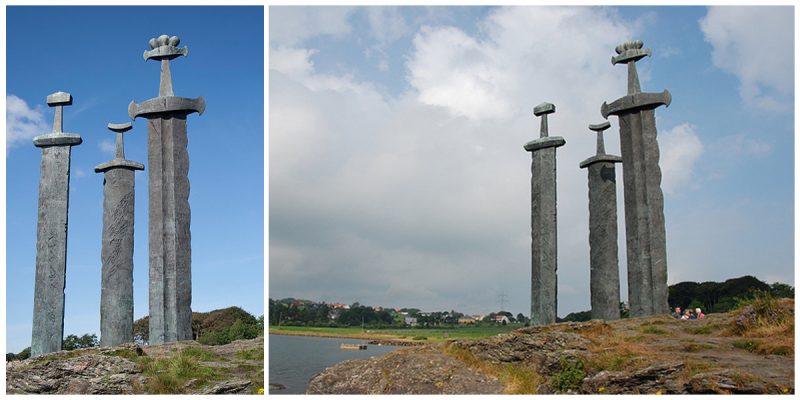Sverd i fjell (English: Swords in Rock) is a commemorative monument located in the Hafrsfjord neighborhood of Madla, a borough of the city of Stavanger in Rogaland county, Norway. The three giant swords are more than just a tourist attraction. They commemorate the historic Battle of Hafrsfjord, one of the largest in the history of Norway that took place in the year 872, when Harald Fairhair, son of Halfdan the Black Gudrödarson, defeated a coalition of several petty kings and united the three districts of Norway under a single monarch. Thus beginning one of the golden ages of the Scandinavian country.
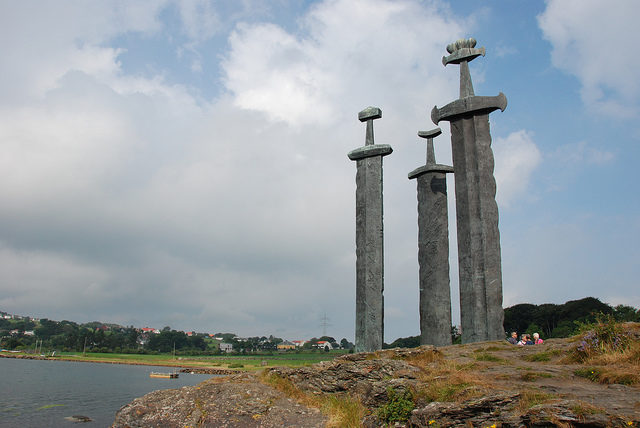
Created by Norwegian sculptor Fritz Røed (1928 – 2002) from Bryne, the memorial consists of three bronze swords, each approximately 33 feet tall, planted into a hill of solid rock near the edge of the fjord, where the ancient battle took place. The monument was unveiled in 1983 by King Olav V of Norway, known by his nickname Folkekongen or “The People’s King”, and has stood proudly ever since.
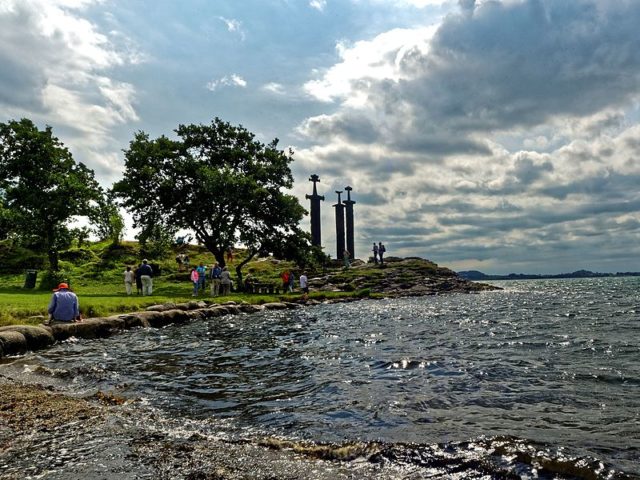
The Battle of Hafrsfjord is described in the Saga of Harald Fairhair in Snorri’s Heimskringla which is a collection of sagas about historical Norwegian rulers from Harald Fairhair of the 9th century up to the death of the pretender Eystein Meyla in 1177. The accounts of Harald and his life differ on many points, and the lack of existing sources makes it very difficult to reconstruct his life since the extant accounts of his life in the sagas were set down in writing around three centuries after his lifetime. Some critical aspects of his life may be uncertain but it is clear that in the 12th and 13th centuries Harald was regarded as having unified Norway into one kingdom and today he is recognized as the first King of Norway.
Most historians tend to regard the unification of Norway as a process which lasted for centuries, rather than being the result of a single battle. However, the Battle of Hafrsfjord is considered as a critical battle and the decisive event in that process.
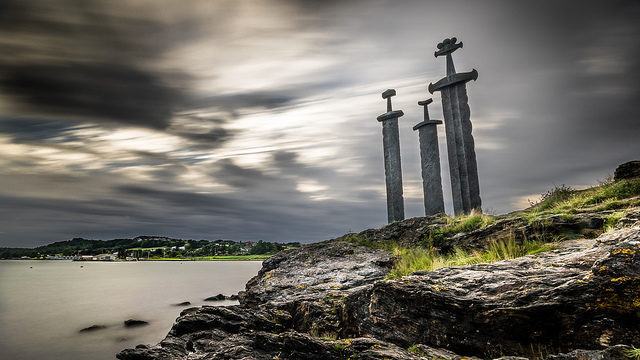
Although most of the sources about the battle were written hundreds of years after it took place, the only contemporary poem to this event was written by the court poet of King Harald Fairhair, Torbjørn Hornklove:
Did you hear in Hafrsfjord
how hard they fought
the high born king
against Kjotve the Rich.
ships came from the east
craving battle,
with gaping heads
and prows sculpted.[1]
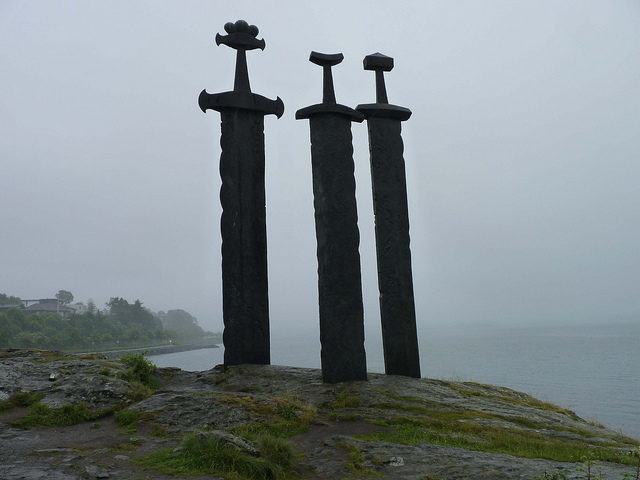
The largest sword represents the victorious Harald, the two smaller swords represent the defeated kings, and the crowns on the swords represent the different districts which took part in the battle. Much of Harald Fairhair’s later rule was plagued by conflicts with his many sons. Twelve of his sons are named as kings, two of them over the whole country. Today, these swords stand for peace and unification and they are planted into solid rock, so they may never be removed. A medieval jewel of Norway, which represents the history and culture of the Vikings. Today the area is one of Stavangers most popular recreational areas.
https://www.youtube.com/watch?v=1Vnvg_fJ06E
